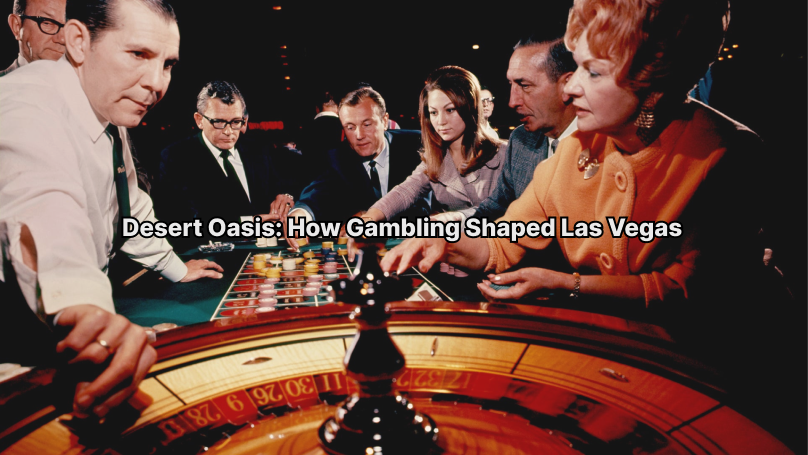
Las Vegas is called Sin City because it has every mortal sin, especially greed, in one place. There are countless ways to strike untold riches and gamble a fortune away in Las Vegas, with both achievable in the same night. Those who want other forms of entertainment can find it as well. Discretion is guaranteed, leading to the saying, “What happens in Vegas stays in Vegas.” But, this shining Mecca of sin did not appear overnight.
Las Vegas had humble beginnings as a trading stop for traders going between New Mexico and California. The small settlement grew as it accommodated waves of transients who needed a quick way to let off steam. Entrepreneurs realized that they weren’t asking for the price and set up various forms of entertainment that grew the city. Las Vegas is still growing, but now that growth is online, letting anyone visit a Las Vegas online casino to enjoy the splendor of the gambling capital of the world.
Who Founded Las Vegas?
In 1829, Spanish explorer Rafael Rivera discovered an oasis. He named it Las Vegas, which means “meadows” in Spanish. There were no settlers in the area, and not even the Mormon missionaries could make the local wandering Indians settle there. But, all of that changed in 1859 when local prospectors struck gold, prompting a huge gold rush and the first actual settlement in the area.
The rail line through Las Vegas was finished in 1905, with the city proper founded in 1911. One city block was designated to host saloons in an attempt to keep sinners contained, creating a de facto gambling city within the city. From that point, Las Vegas gambling only kept growing and in 1931 experienced a renaissance when Nevada legalized gambling. That same year, the Hoover Dam started construction to provide much-needed power for the city.
Up to 5,000 Hoover Dam construction workers worked at the site on any given day. On average, they each received $100 a month (worth $2,066 today). When they wanted to let off steam, the perfect place for that was right around the corner. Las Vegas gambling let those blue-collar workers experience the gold rush and dream of riches that could turn their lives around.
Gambling Outlawed and Legalized
Las Vegas gambling was always a risky business, but in 1909 it became risky for casino owners as well. That year, the Progressive Movement finally managed to outlaw all gambling in the US, prompting casino owners to go underground. They had to operate saloons where the patrons chose numbers to bet on. The so-called “policy game” resembled today’s lottery, with the organizer mixing 100 balls in a bag and drawing a random set from it. The game was mostly played by minorities, usually for pennies, yet it made saloon owners unimaginably rich.
Seeing that steady stream of money in saloons and no way out of the Great Depression, Nevada was the first to legalize gambling by enacting Assembly Bill 98. It turned Las Vegas gambling into a revenue stream for the state. There was only one problem: the mob. The casino-saloon owners were adept at paying off government officials, including policemen, and squashing any pesky protesters who didn’t want their family members losing a fortune on gambling. Not knowing how to handle the conflict, the Nevada government again designated a block where the sin would be contained. That signaled the rise of the Las Vegas Strip, the Nevada gambling city.
The Rise of the Casino Industry
The Las Vegas government gave the first license to build a hotel there to Tommy Hull. He chose the location we now know as the Las Vegas Strip. His El Rancho hotel was the first proper casino in the city, attracting other businessmen. One of them was Bugsy Siegel, a notorious mobster who built the Flamingo, another hotel casino. That marked the official start of modern Las Vegas gambling, with each new hotel or casino adding another layer to the Las Vegas
history of casinos. Those who couldn’t get a spot at the Strip expanded online, such as the Verde Casino.
Las Vegas casinos eventually started thinking big. They organized and turned Las Vegas gambling into an industry, recruiting popular musicians and movie stars to advertise for the place. Everyone who had money to spend was welcome; those who didn’t want to gamble just yet had plenty of other entertainment. In the early 1960s, Frank Sinatra appeared regularly in Las Vegas casinos, providing an aura of refinement to the city. In the late 1960s, it was Elvis Presley with his outrageous performances who put Las Vegas on the world map.
The Vegas We Know Today
Las Vegas gambling grew the city to what it is today, a cultural phenomenon featured in movies such as:
1964 “Viva Las Vegas” with Elvis Presley
1998 “Fear and Loathing in Las Vegas” with Johnny Depp
2009 “Hangover” with Bradley Cooper
The three movies present the evolution of Las Vegas from a cozy gambling oasis to a mega-resort complex for alcohol- and drug-fueled rampages. Elvis played a plucky man traveling solo to Las Vegas to find love, but Depp and Cooper visited to lose their minds and, hopefully, find themselves in the labyrinth of Las Vegas streets.
That labyrinth was built over the decades by a couple companies that adopted every architectural style imaginable. New York skyscrapers, an Egyptian pyramid, and the Eiffel Tower are all there, beckoning people to visit them. There is no telling what sin one can find in Las Vegas after dark or if there is enough redemption for the soul afterwards. But, there is no way to know until one takes the plunge and rolls the dice. That is the true meaning of Las Vegas gambling.